Marketing and Communications Detail Amity Chan shares her experience at the engagement stations in An Italian Impressionist in Paris: Giuseppe De Nittis (on view through February 12).
In An Italian Impressionist in Paris: Giuseppe De Nittis, we see how De Nittis developed fruitful friendships with important impressionist painters like Edgar Degas and Edouard Manet through the uniqueness of his paintings and techniques. There is no doubt that art has the power to help us connect more deeply with ourselves and with others.
To replicate this experience, the Phillips team put together an engagement space in the exhibition for our visitors to connect deeper to De Nittis’s world of art as well as with other visitors. Through three interactive activities, we encourage visitors to look at, talk about, and write about the works of art in the exhibition. On the display walls, visitors could also learn from the perspectives of other people and reflect on how experiences often affect one’s worldview.
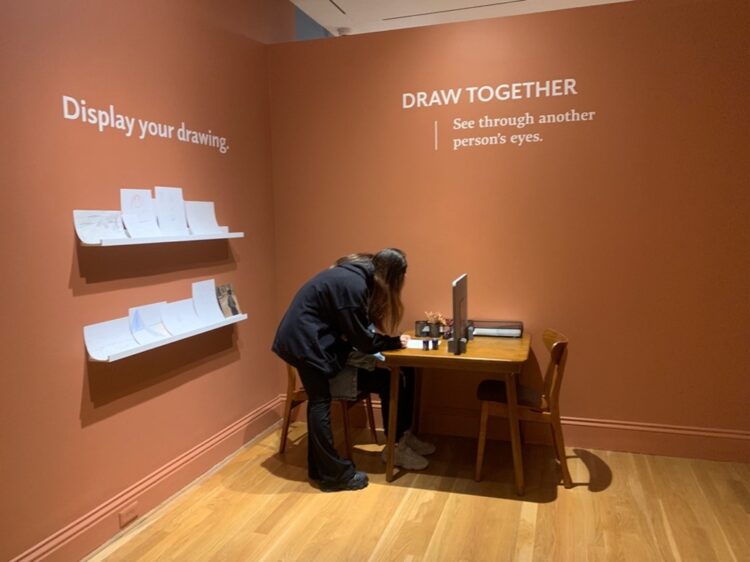
Station 1: Draw Together
Station 1: Draw Together
This activity requires two players. One as the describer and one as the drawer. The describer picks one of De Nittis’s paintings to describe to the drawer. Then, the drawer makes a drawing based on the visual description. After that, the two players look at the drawing and reflect on the activity together.
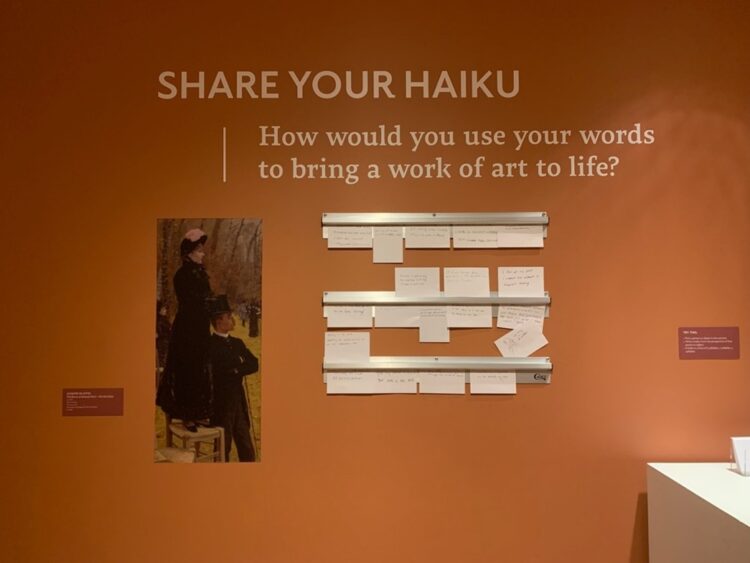
Station 2: Share Your Haiku
Station 2: Share Your Haiku
Write a haiku from the perspective of a person or object in an artwork of your choice.

Station 3: Personal Choice
Station 3: Personal Choice
Be a Phillips curator! Pick and create a collection from the artworks in the exhibition.
I tried out all three of the engagement stations. I found “Draw Together” the most interesting because it gave me the opportunity to work with another person and hear their views of art directly. I played as a drawer with my fellow Museum Assistant Elizabeth Cumbo. As someone who works in the museum and spends more time in the exhibition than any visitors, I thought it would be somewhat easier for me. However, it felt very foreign to visualize a painting based on my partner’s description and not be able to see the image that I was drawing. While making the drawing, I would also need to consider the fashion elements in 1870s Paris. For example, when Elizabeth described to me that both figures are wearing hats, I immediately thought of sun hats. However, in De Nittis’s painting, the male figure is wearing a top hat and the female figure is wearing a white hat with flowers. This made me realize that I was not only looking through the other player’s lens but also the artist’s lens. The final drawing is an end product of three worlds merged together: my own experience and imagination, Elizabeth’s description, and De Nittis’s view of Paris.

My drawing vs De Nittis’s painting
After completing each activity, visitors are encouraged to share the drawings and poems on the display shelves. It was fascinating to see other visitors’ works, especially the Haiku poems in which we are asked to write from the perspective of a person or object in the paintings.
Here are some interesting finds on the display shelves:
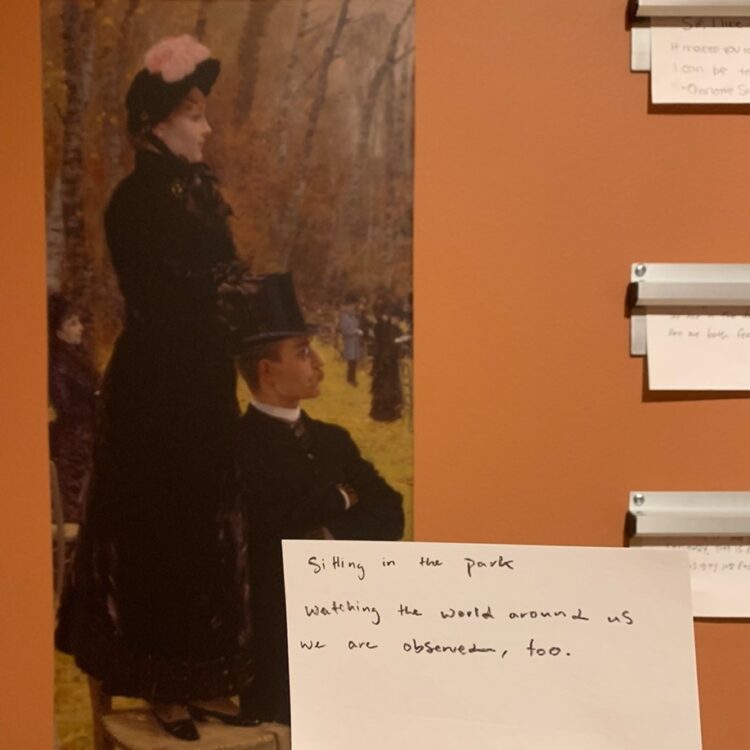
Visitor haiku
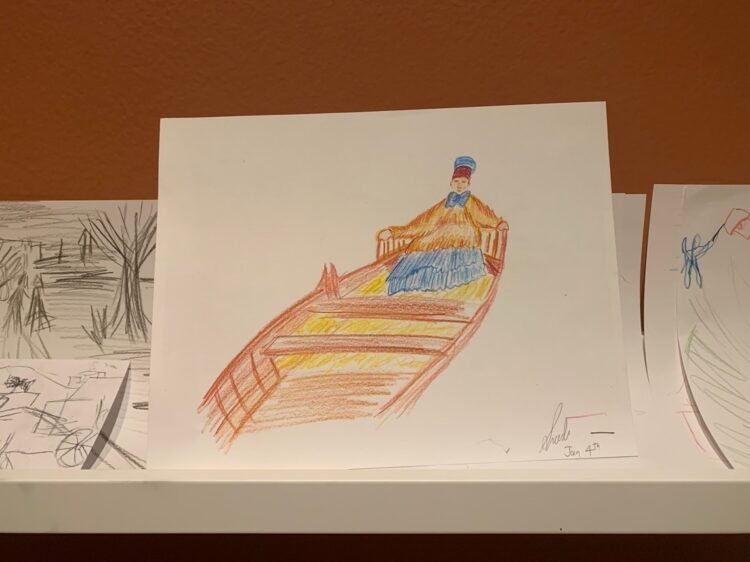
Visitor drawing
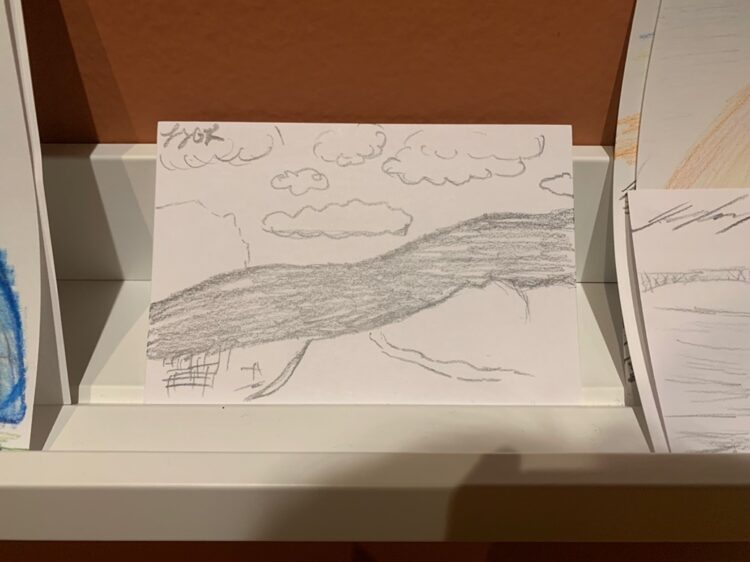
Visitor drawing
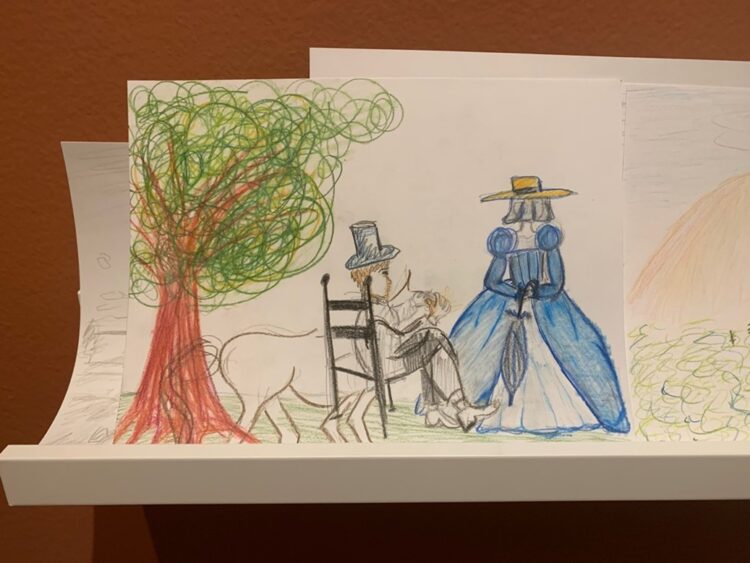
Visitor drawing
An Italian Impressionist in Paris: Giuseppe De Nittis is now on view through February 12. I highly encourage you to come and experience De Nittis’s 1870s Paris at The Phillips Collection.
